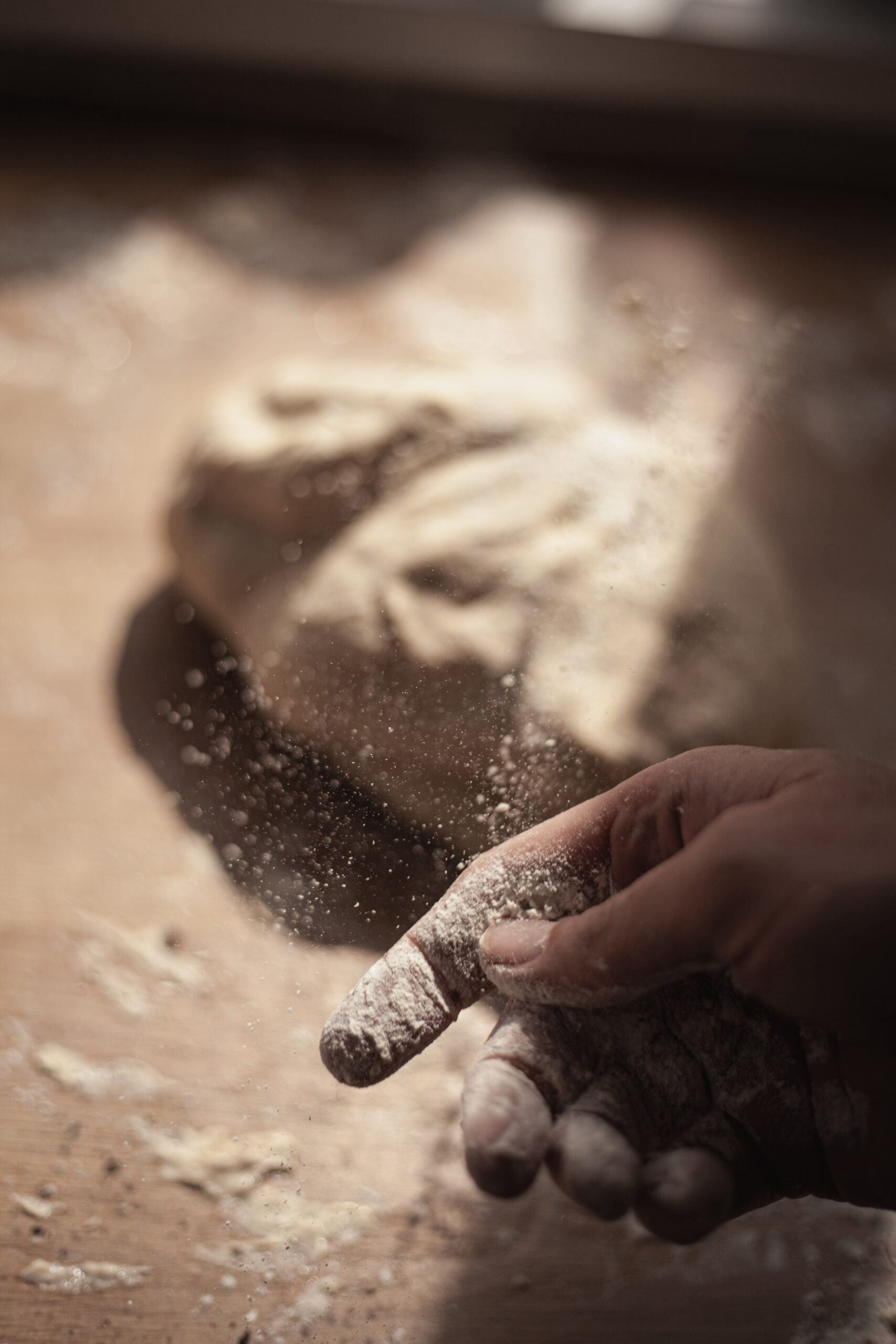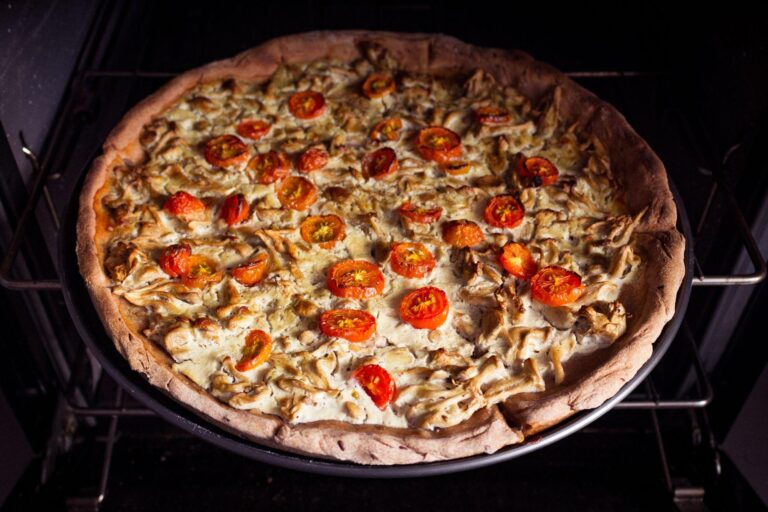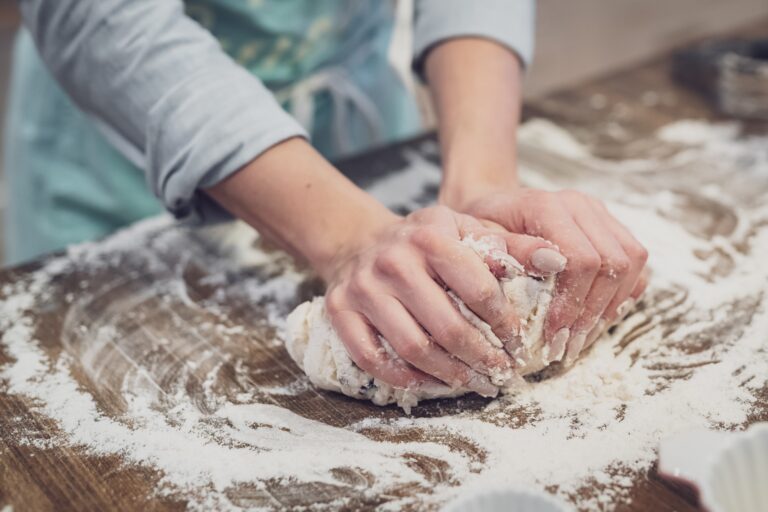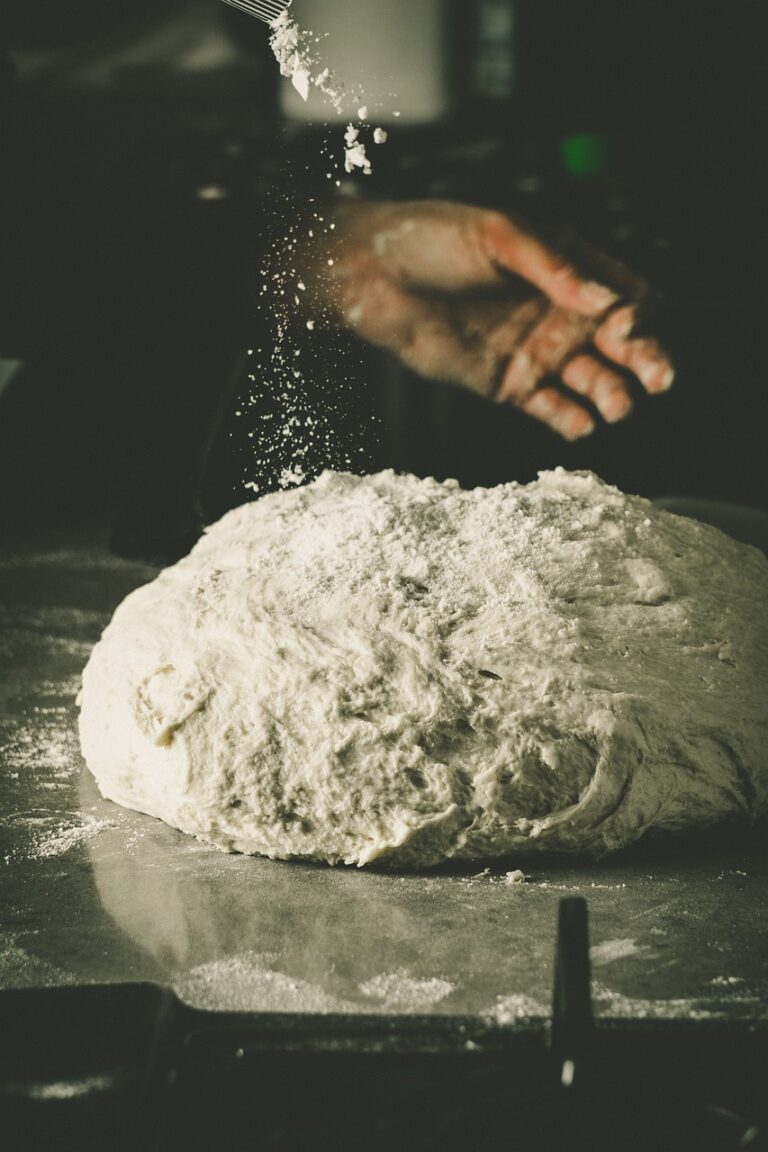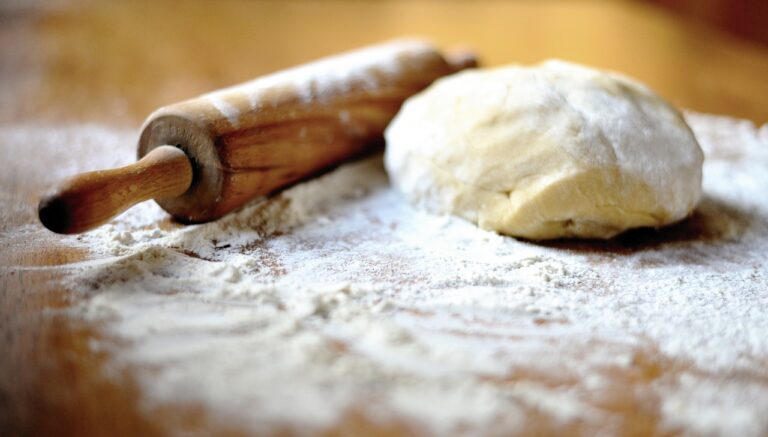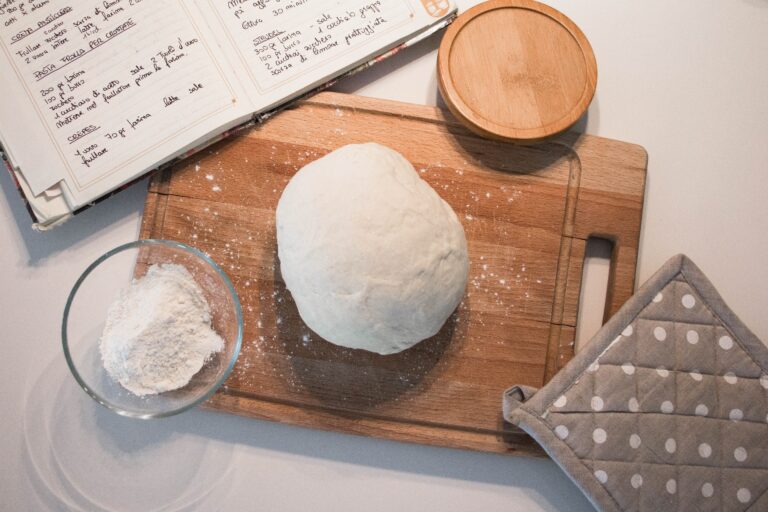Low-Fat Pizza Crust Recipe
Are you looking for a healthier alternative to your favorite pizza crust? You’ve come to the right place! In this article, we’ll show you how to make a delicious low-fat pizza crust that’s light and crispy. With simple ingredients and easy-to-follow instructions, you’ll enjoy guilt-free pizza in no time.
Plus, we’ll share some tips for achieving the perfect texture and suggest tasty variations and toppings to suit your taste buds. Get ready to indulge in a slice of innovation!
Ingredients for Low-Fat Pizza Crust
The low-fat pizza crust requires flour, Greek yogurt, baking powder, and salt. This recipe offers a healthier alternative to traditional pizza dough by incorporating Greek yogurt instead of oil or butter. The result is a lighter crust that still delivers on taste and texture.
Greek yogurt is an excellent ingredient choice for low-fat cooking techniques. It adds moisture and richness to baked goods while reducing fat content. Additionally, it provides protein, calcium, and probiotics that contribute to a healthy diet.
Mix 1 cup of flour with one teaspoon of baking powder and a pinch of salt in a bowl to make the dough. Then add ½ cup of Greek yogurt and mix until it forms into a ball. Knead the dough on a lightly floured surface for about 5 minutes until smooth.
This low-fat pizza crust can be a base for any toppings you desire. It bakes up crispy on the outside but still has that satisfying chewiness in pizza.
Making Low-Fat Pizza Crust
This low-fat pizza crust recipe offers a healthier alternative to traditional pizza dough by reducing fat while maintaining flavor and texture. Individuals with gluten intolerance can enjoy this delicious treat by using gluten-free options such as almond flour or chickpea flour.
The health benefits of this low-fat pizza crust are numerous. With reduced fat, it is lower in calories and saturated fats than regular pizza crusts, making it suitable for those watching their weight or looking for heart-healthy options. Additionally, whole grain flour increases the fiber content, promoting better digestion and aiding in weight management. Toppings such as fresh vegetables and lean proteins further enhance the nutritional value of this dish.
Whether following a specific dietary plan or seeking innovative ways to make your favorite dishes healthier, this low-fat pizza crust recipe provides a tasty solution without sacrificing taste or texture.
Tips for Achieving a Light and Crispy Low-Fat Pizza Crust
Are you looking to achieve a light and crispy low-fat pizza crust? Let’s explore some key points that can help you in this endeavor.
First, should you use yeast or baking powder? We’ll discuss the pros and cons of each.
Second, if you’re following a gluten-free diet, what are your options for making a delicious crust? We’ll dive into some alternatives.
And finally, what are the best flour alternatives for those who want to reduce their carb intake? Stick around as we explore these topics and provide evidence-based insights to help you make the best choices for your low-fat pizza crust.
Yeast Vs. Baking Powder?
If you’re unsure about the leavening agent, use yeast instead of baking powder in your low-fat pizza crust recipe. While yeast and baking powder can make a dough rise, yeast is considered the best-rising agent for pizza crusts. Here are three reasons why:
-
Flavor: Yeast creates a complex flavor profile as it ferments and interacts with the other ingredients in the dough. This results in a deliciously tangy and aromatic pizza crust that enhances the overall taste of your creation.
-
Texture: Yeast allows for a longer fermentation process, which develops gluten strands in the dough. This leads to a light, airy texture with a crisp exterior, making every bite enjoyable.
-
Rise: Yeast provides a more significant upgrade than baking powder, resulting in a thicker crust that holds its shape well when topped with sauce, cheese, and other toppings.
So next time you aim for an innovative low-fat pizza crust recipe, choose yeast as your leavening agent for the ultimate riding experience!
Gluten-Free Options?
Regarding gluten-free options, there are several alternatives to traditional pizza crusts. Finding a suitable replacement for regular pizza dough can be challenging for those who cannot consume gluten due to dietary restrictions or intolerances. However, with the growing popularity of gluten-free diets, numerous alternative flours can now be used as a base for delicious gluten-free pizza crusts.
One option is almond flour, made from ground almonds with a slightly nutty flavor. Another alternative is coconut flour, made from dried coconut meat, which adds sweetness to the crust. Other popular choices include rice flour, tapioca flour, and chickpea flour.
Here’s a table comparing these different alternative flours:
| Flour | Texture | Taste |
|---|---|---|
| Almond Flour | Light and airy | Nutty |
| Coconut Flour | Dense | Sweet |
| Rice Flour | Light and crisp | Neutral |
| Chickpea Flour | Chewy | Earthy |
Experimenting with these gluten-free options can lead to innovative and delicious pizza creations that cater to everyone’s dietary needs. So go ahead and get creative in the kitchen!
Best Flour Alternatives?
Almond flour is one of the best flour alternatives for a gluten-free pizza crust. It has a light and airy texture and a nutty taste. Using almond flour as the base for your gluten-free pizza crust adds flavor and provides additional nutritional benefits.
Here are some advantages of using yeast over baking powder when making a gluten-free pizza crust:
- Yeast creates a more authentic and traditional pizza dough texture.
- It allows the dough to rise naturally, resulting in a lighter and chewier crust.
- The fermentation process of yeast enhances the flavor profile of the crust.
On the other hand, baking powder is a chemical leavening agent that produces quick results. It can make the crust denser and less flavorful compared to yeast-based dough.
Variations and Toppings for Low-Fat Pizza Crust
You can experiment with various toppings and flavors to add a twist to your low-fat pizza crust. While the crust may be low in fat, that doesn’t mean it has to be lacking in taste or creativity.
There are plenty of variations and creative topping ideas for your low-fat pizza crust that will make it not only healthy but also delicious.
One variation for a low-fat pizza crust is whole wheat flour instead of regular all-purpose flour. Whole wheat flour adds fiber and nutrients to your crust while maintaining a light and crispy texture. Another option is using cauliflower as the base for your crust. Grate or process cauliflower, mix it with some egg and seasonings and bake until golden brown. This alternative is not only low in fat but also gluten-free.
When it comes to toppings, the possibilities are endless. You can go traditional with classic tomato sauce, cheese, and vegetables like bell peppers, onions, and mushrooms. Or you can get creative by experimenting with different condiments, such as pesto or barbecue sauce. Try topping your pizza with lean proteins like grilled chicken or shrimp for added flavor without adding unnecessary fat.
Don’t be afraid to think outside the box regarding toppings, either. Add fruits like pineapple or figs for a sweet and savory combination, or sprinkle some fresh herbs like basil or cilantro on top for extra freshness.
Baking and Serving Suggestions for Low-Fat Pizza Crust
When it comes to choosing toppings for your low-fat pizza crust, there are plenty of delicious options that won’t compromise your healthy eating goals.
From a variety of fresh vegetables like mushrooms, bell peppers, and onions to lean proteins like grilled chicken or turkey pepperoni, you can create a satisfying and nutritious pizza.
As for cooking time and temperature, following the instructions in your recipe or package is essential, as they may vary depending on the type of low-fat crust you use.
Toppings for Low-Fat Crust
Add fresh vegetables like tomatoes, peppers, and mushrooms if you want a delicious and healthy topping option for your low-fat crust. Not only do these vegetables add vibrant colors to your pizza, but they also provide essential nutrients.
Tomatoes are rich in vitamins A and C, as well as lycopene, which is known for its antioxidant properties.
Peppers are packed with vitamin C and various antioxidants, while mushrooms offer a good source of B vitamins and minerals such as selenium.
Additionally, you can get creative with other low-fat crust alternatives by using ingredients like lean proteins such as grilled chicken or turkey breast slices or plant-based options like tofu or tempeh.
Experimenting with different combinations of toppings will keep things interesting and provide a range of flavors that will satisfy your taste buds while keeping your pizza healthy and low in fat. So go ahead and let your imagination run wild when it comes to creating innovative pizza toppings!
Cooking Time and Temperature
Now that you have chosen your toppings for the low-fat pizza crust let’s talk about cooking time and temperature. Getting the right balance is crucial to achieving a perfect crust that is crispy on the outside and soft on the inside.
Here are some cooking techniques you can try:
-
Preheating: Make sure to preheat your oven before baking the pizza. This helps in achieving an even heat distribution.
-
High Temperature: Set your oven temperature to around 450°F (230°C) for a shorter cooking time, resulting in a crispier crust.
-
Alternative Flours: If you use alternative flours like almond or chickpea flour, remember that they may require different cooking times and temperatures than traditional wheat flour.
Experiment with different combinations of cooking time and temperature until you find what works best for your low-fat pizza crust recipe. Remember, innovation comes from trying new things!
Health Benefits of Low-Fat Pizza Crust
To enjoy the health benefits of low-fat pizza crust, you should try making it with whole wheat flour and Greek yogurt.
By using whole wheat flour instead of regular all-purpose flour, you increase the nutritional value of your crust. Whole wheat flour is higher in fiber, vitamins, and minerals than its refined counterpart. This means that by opting for a low-fat crust made with whole wheat flour, you can boost your intake of nutrients like magnesium, zinc, and B vitamins.
Greek yogurt is another crucial ingredient that adds nutritional value and a creamy texture to your low-fat pizza crust. It contains less fat than traditional yogurt while providing an excellent source of protein and calcium. Protein is essential for building and repairing tissues, while calcium helps promote strong bones and teeth.
In addition to these health benefits, a low-fat pizza crust reduces your overall calorie intake. By cutting down on fat content, you are reducing the number of calories consumed without sacrificing flavor or enjoyment.
Making a low-fat pizza crust using whole wheat flour and Greek yogurt can offer numerous health benefits, such as increased nutrient intake, reduced calorie consumption, and improved overall well-being. So why not give it a try? Your taste buds will thank you!
